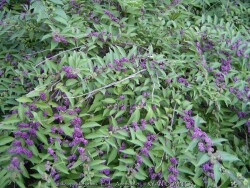
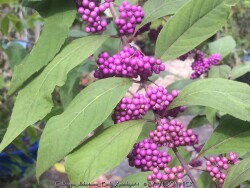
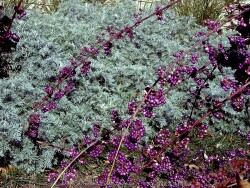
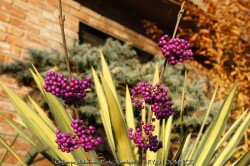
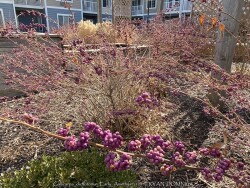

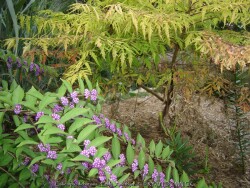

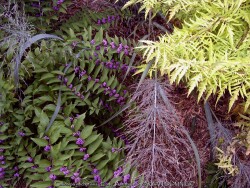
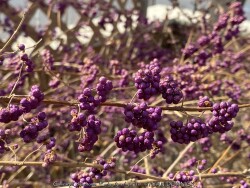
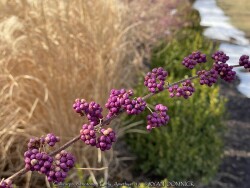
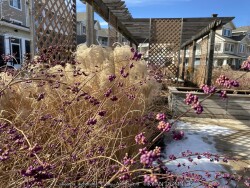
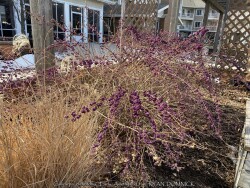
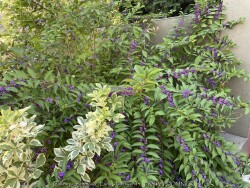

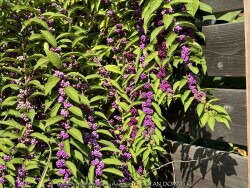
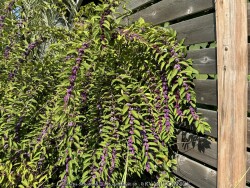
Plant Min Zone: 5a
Plant Max Zone: 9a
Sunlight: Full Sun, Part Sun, Shade
Water / Rainfall: Average
Soil Quality: Average, Rich
Bloom Season: Summer, Late Summer
Flower Color: Light Pink, Light Purple
Berry / Fruit Color: Purple
Spring Foliage Color: Green
Summer Foliage Color: Green
Fall Foliage Color: Green, Yellow
Evergreen Foliage: No
Winter Interest: No
Scented Flowers: No
Drought Tolerance: Medium
Wet-Feet Tolerance: Low
Humidity Tolerance: Medium, High
Wind Tolerance: Medium
Poor Soil Tolerance: Clay Soils
Height: 3' - 5'
Width: 3' - 5'
Growth Rate: Medium
Service Life: Long: 5-10 years
Maintenance Need: Low
Spreading Potential: Low
Yearly Trimming Tips: Trim Shrub to Desired Size in Late Winter or Early Spring Before New Growth: Blooms on New Wood.
Plant Grouping Size: Specimen Planting of 1-3, Small Grouping of 3-5
Best Side of House: West Exposure, East Exposure, North Exposure
Extreme Planting Locations: None
Ornamental Features: Long Lasting Fall Color, Multiple Seasons of Interest
Special Landscape Uses: Hedge Row
Possible Pest Problems: None
Plant Limitations: May get Occasional Winter-kill, Needs Thick Winter Mulch
Shippable in 2026: YES
Purple beautyberry (Callicarpa dichotoma 'Early Amethyst'), native to Asia, is one of the most unique and attractive shrubs for berry production. Considered a three-season shrub, green foliage emerges in spring with attractive clusters of tiny pink flowers in summer. Big conglomerates of fruit clusters occur along the stem at evenly spaced intervals. Bright purple in color, the fruit is very effective through the month of October and November in our Zone 6a Kansas climate. Fall foliage is bright yellow often contrasting with the purple berries in November. The following spring, watch for winter kill if temperatures drop below -5 to -10 degrees F and be prepared to cut to a few inches off the ground. You may choose to do this rejuvenation anyways if it has not been done in a few years to increase fruit production on vigorous new growth. New shoots create fountain-shaped shrub 3-4' after rejuvenation. Flowering occurs on new wood so you will always have berries when using this method. Purple berry clusters are highly ornamental but rarely eaten (or stripped clean) by birds. Beautyberry grow best in part to full sun but can also tolerate almost full shade and still produce fruit. This makes them valuable for a north side of the house planting that only gets a couple of months of sun during the high sun angle peak of summer. Mild drought is tolerated at the expense of dropping fruits if it gets too dry. Our plants in the display garden survived without irrigation but did not fruit during the extreme drought of 2011. Overall this is a great plant for the landscape that is unfortunately often underused.